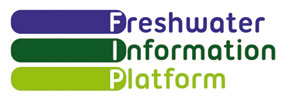What are regulating and maintaining ecosystem services?
These are services that regulate and maintain ecosystem processes, and in so doing, support ecosystem functioning and productivity. Regulating and maintaining services describe the ways in which living organisms can mediate or moderate their environments in ways that benefit human well-being.
What regulating and maintaining ecosystem services do freshwater ecosystems provide?
Freshwater systems provide a range of vital regulating and maintaining ecosystem services through processes that move water, energy, nutrients, organisms and sediment across different landscapes and habitats, linking atmospheric, terrestrial, groundwater and marine systems.
Water purification: freshwater ecosystems can maintain sufficient water quality for drinking and domestic use. Freshwater plants and ecosystems can trap, breakdown, process and transform pollutants, toxins and heavy metals present in water.
Decomposition and cycling of nutrients: through freshwater and terrestrial systems, for example by aquatic plants and algae.
Carbon sequestration: carbon accumulates in living plant tissue and decomposed vegetation in waterlogged conditions. This ‘locks up’ carbon stores which helps regulate the amount of carbon dioxide in the atmosphere.
Flood protection: natural freshwater systems can control the frequency and magnitude of runoff and flooding through water interception and storage. River channel alterations and floodplain development can reduce the ability of ecosystems to provide this buffering effect. Aquifers and other unsaturated soils and rocks can provide capacity to store extreme rainfalls as groundwater, providing buffers to flood risk and drought.
Erosion prevention: bankside vegetation, reed beds, riparian zones and wetlands can cover plays an important role in soil retention and the prevention of erosion and landslides.
Maintaining populations and habitats: natural ecosystem processes shape ecological structure, health and function, maintaining their ecological status and the services they provide for future generations.
Local climate regulation: evaporation over freshwaters and wetlands can cool the surrounding atmosphere and increase humidity, creating microclimates.
Pollination: floodplain meadows provide habitat for pollinating insects such as bees
Fire breaks: bodies of water can act as breaks for regulating the spread of wildfires.
How do ecosystem services relate to freshwater ecosystem management?
An ecosystem service approach has the potential to strengthen freshwater management which aims to coordinate the conservation, management and sustainable development of water, land and resources across entire river basins.
Such integrated approaches are designed to maximise the social and economic outputs of freshwater ecosystems whilst preserving and restoring their ecological status. By explicitly linking ecological status with human benefits, the ecosystem service approach offers the potential for ecosystem health and functioning to be better valued within environmental policy making and management.
What are the policy and management challenges for valuing regulating and provisioning ecosystem services?
Regulating and maintaining services cannot be easily measured in terms of production. Instead, they are measured by monitoring an ecosystem’s capacity to regulate a particular service. For example, if a river system is modified to the extent that it can no longer naturally buffer floods, then its flood prevention service will be diminished. Another consideration is that for ecosystem services to have value, human end users are required. This means that adequately valuing the importance of services such as nutrient cycling or pollination can be difficult, as they can take place over large spatial and temporal scales, often without a easily definable ‘end user’. Changes to land use such as intensified agriculture and urban growth provide some of the key threats to freshwater regulating and maintaining services, by preventing the natural cycling, transformation and storage of water, nutrient, sediment and pollutant flows through freshwater systems. However, humans are increasingly creating new freshwater systems in an attempt to enhance the regulating and maintaining services they can provide. A key example of this is wetland creation and expansion, in an effort to encourage natural water purification and carbon storage.
Further reading
Reports and publications:
CICES (2012). Common International Classification of Ecosystem Services - Report to the European Environment Agency prepared by R. Haines-Young & M. Potschin (Download report, 1.8mb)
Faneca Sanchez, M. et al. (2015). Report on the MARS scenarios of future changes in drivers and pressures with respect to Europe’s water resources. Part 4 of MARS Deliverable 2.1: Four manuscripts on the multiple stressor framework. (Download report, 15mb)
Grizzetti B., Lanzanova D., Liquete C. & A. Reynaud (2015). Cookbook for water ecosystem service assessment and valuation, JRC Science and Policy Report, European Union (Download report, 8mb)
Millenium Ecosystem Assessment (2005). Ecosystems and Human Well-being: Current State and Trends, Chapter 7 - Freshwater Ecosystem Services, Volume 1, ed. by R. Hassan, R. Scholes & N. Ash (Download report, 700kb)
Selected Freshwater blogs:
Freshwaterblog (2014). Can an ecosystem service approach strengthen river conservation? (External website)
Freshwaterblog (2015). The MARS ‘cookbook’ for assessing freshwater multiple stresses and ecosystem services (External website)
Freshwaterblog (2016). New factsheets on ecosystem services and the future of European freshwaters (External website)
Freshwaterblog (2016). An ecosystem services a pproach for freshwaters (External website)
Freshwaterblog (2016). New tool links freshwater ecological status and ecosystem services (External website)
Freshwaterblog (2017). Innovative solutions for water management and ecosystem services through the DESSIN Project (External website)



